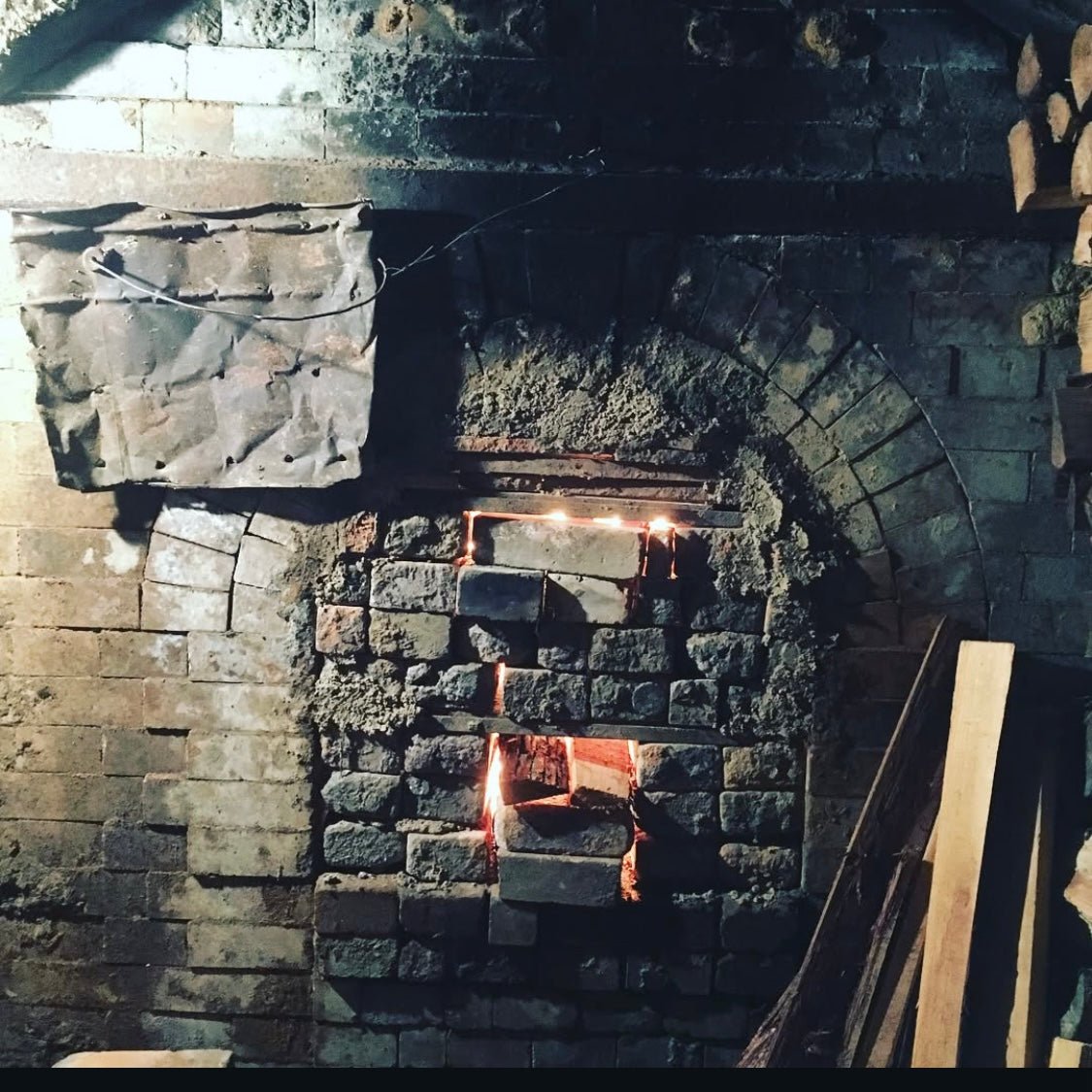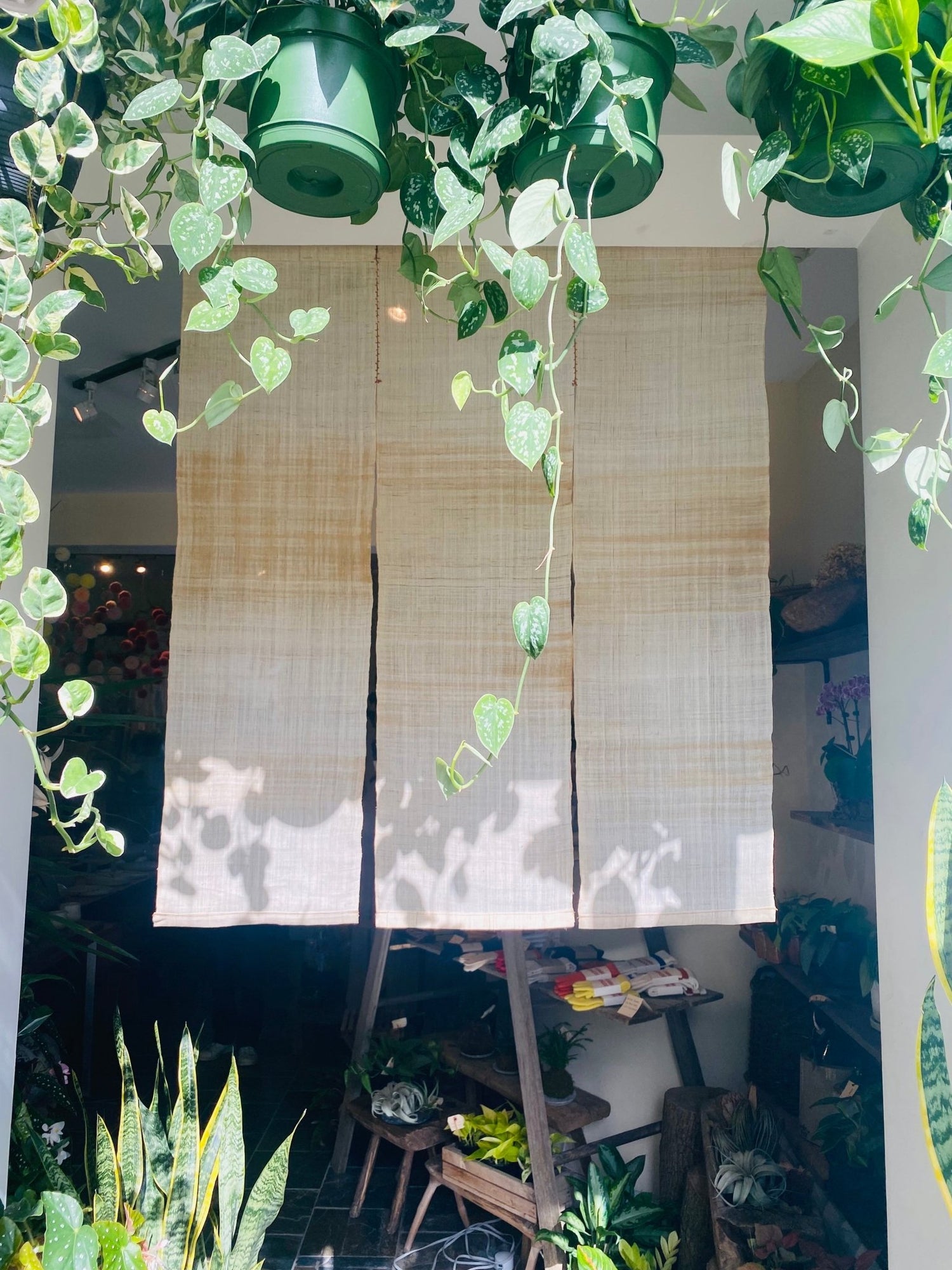Over a year ago, Ai-san, who runs the online store Entoten in San Diego, asked me to make some teabowls. Her request had been in the back of my mind for a long time, but I didn’t start working on them until this May. I finally made six pieces. Unlike my previous teabowls, which had bold designs, this time I went with calmer shapes and slightly smaller sizes.
As I returned to teabowl-making after a long time, I found myself reflecting on many things—which I’d like to share here.

(Made By Satoshi Yoshikawa 2025)
Before I began working on the pieces, I had a chance to visit San Diego and meet Ai-san again after more than ten years. I also had the opportunity to meet Ms. Morita, a tea teacher based there, along with her students. They asked many thoughtful questions, and I was deeply impressed by their passion for tea. Ms. Morita had previously purchased one of my teabowls, and getting to speak with her in person was a valuable experience.
While in San Diego, I also met Amy, the owner of PARU TEA. Over a lovely tea session, she shared her thoughts on the beauty of tea and how she approaches it. I was happily surprised to see one of my teabowls she had purchased earlier, now being used in her space—it felt like a quiet reunion with my own work.
After returning to Canada, I had about ten free days and decided to spend that time making teabowls again.
The foundation of my tea ceramics comes from the Momoyama period—an era often depicted in shows like Shogun, known for its turbulent history and strong samurai culture. It was a time when tea utensils were made for warriors—large in size, with bold shapes and powerful designs. To those unfamiliar with tea, they might even look difficult to drink from.
Since that style had always been my base, I tried to make teabowls in the same way, but something felt off. My hands weren’t moving the way they used to. After making around 20 pieces, I realized that the image in my mind wasn’t about Momoyama-style tea—it was shaped by the scenery I saw and the people I met in San Diego. I also remembered that I now live in Toronto, not Japan. It all suddenly made sense—no wonder it wasn’t going well.
Teabowls from the Momoyama era were made for samurai—men who lived with swords in hand. Back when I lived in Japan, the people who liked my work shared a similar sensibility, so I never felt a disconnect. But this time, there was a gap between what I was making and who I was making it for. It wasn’t a technical issue with materials or firing—it was something more intuitive.


So I decided to try a completely different method. I stopped using the wheel and began hand-forming each bowl, inspired by Raku ware—a style that also started in the Momoyama period. Working this way felt really good. I found myself wanting to make more and more, shaping each bowl gently so it would sit nicely in the palm of a hand.
(Raku ware was created by a tilemaker named Chōjirō at the request of tea master Sen no Rikyū. It was formed by hand without a wheel, made specifically for drinking tea.)

(Raku ware by Chojiro, Important Intangible Cultural Property, owned by Mitsui Memorial Museum)
After I finished the pieces, I called Ai-san to share my thoughts. During the conversation, I told her something I had been thinking about.
Today, most people who study tea are women. And yet, I had been seeing tea culture mainly through the traditional values formed during the Momoyama period—a world shaped by men. I had overlooked the presence of women in tea. Maybe this isn’t just my own thinking, but something that still quietly exists in tea culture as a whole.
Of course, I have great respect for the generations who have passed down the tea tradition. I don’t think we need to drastically change it.
But I started to wonder: maybe one reason many women seem less interested in tea utensils compared to men is because the so-called “masterpieces” that still sit at the top today were made in that older male-dominated context. If those are still considered the best, it might be hard for some women to relate to them—and maybe that’s why they feel distant from tea utensils.

(Shino Ware, National Treasure - Mitsui Memorial Museum)
I shared those thoughts honestly with Ai-san.Ai-san listened thoughtfully. She said that might be true, and that it’s an important point. But she also reminded me that the essence of tea lies in serving tea—and in the spirit of hospitality. In the U.S., thanks to the growing interest in matcha, more and more people are discovering tea culture. They choose tea utensils freely, regardless of gender. She said she wants to create more opportunities to serve tea to those people and help them experience what it means to host.
Her words answered the question I had been carrying.Tea is about offering a cup to someone, and helping them enjoy a peaceful, special moment. Preparing the space, understanding what the guest enjoys, creating that atmosphere—and then, the tea becomes one part of that whole experience. I realized that’s what I had been missing.
When I changed the theme to match the person I was making for, my motivation came back. As I shaped each bowl to feel good in the hand, they naturally became a bit smaller than usual. At first, I worried they might be too small, but once they were fired, I felt relieved.
Before wabi-sabi, before style—what matters most is that tea is something we enjoy. Through this experience, I felt that again, and I was finally able to relax into my work.
There’s a quote I like by Japanese scholar Shoichi Watanabe: “If you don’t feel a shiver of understanding, then you haven’t truly understood.” That’s exactly how I felt.
Lately, with both ceramics and matcha becoming popular again, tea culture is finding new forms. But at its core, it still remains the same—a gesture of care, and a way to give someone a good moment through tea.
If you ever make or serve matcha—for yourself, or for someone important to you—I hope you’ll think about that person as you do it. At first, your movements might feel awkward or unfamiliar. But as you continue, you might find yourself wanting to make the experience more comfortable, more beautiful. Maybe you’ll place a flower nearby, or light some incense. Each small act adds to the moment.
Now that matcha is being seen as a new kind of drink, I think it’s a good time to enjoy it in your own way.
Writing this blog reminded me of the day I first met my wife. I arranged flowers, made matcha, and talked to her about Japanese ceramics, one by one, as she came to learn pottery.
And thinking back further—over ten years ago—I remember meeting my teacher Abe-sensei for the first time. When he saw one of my teabowls, he asked me,
“Do you want to place this bowl on a tatami mat—or on a table?”
Through this recent experience, that question came back to me. And now, I want to carry it in my heart again.
Onlineshop: Entoten





